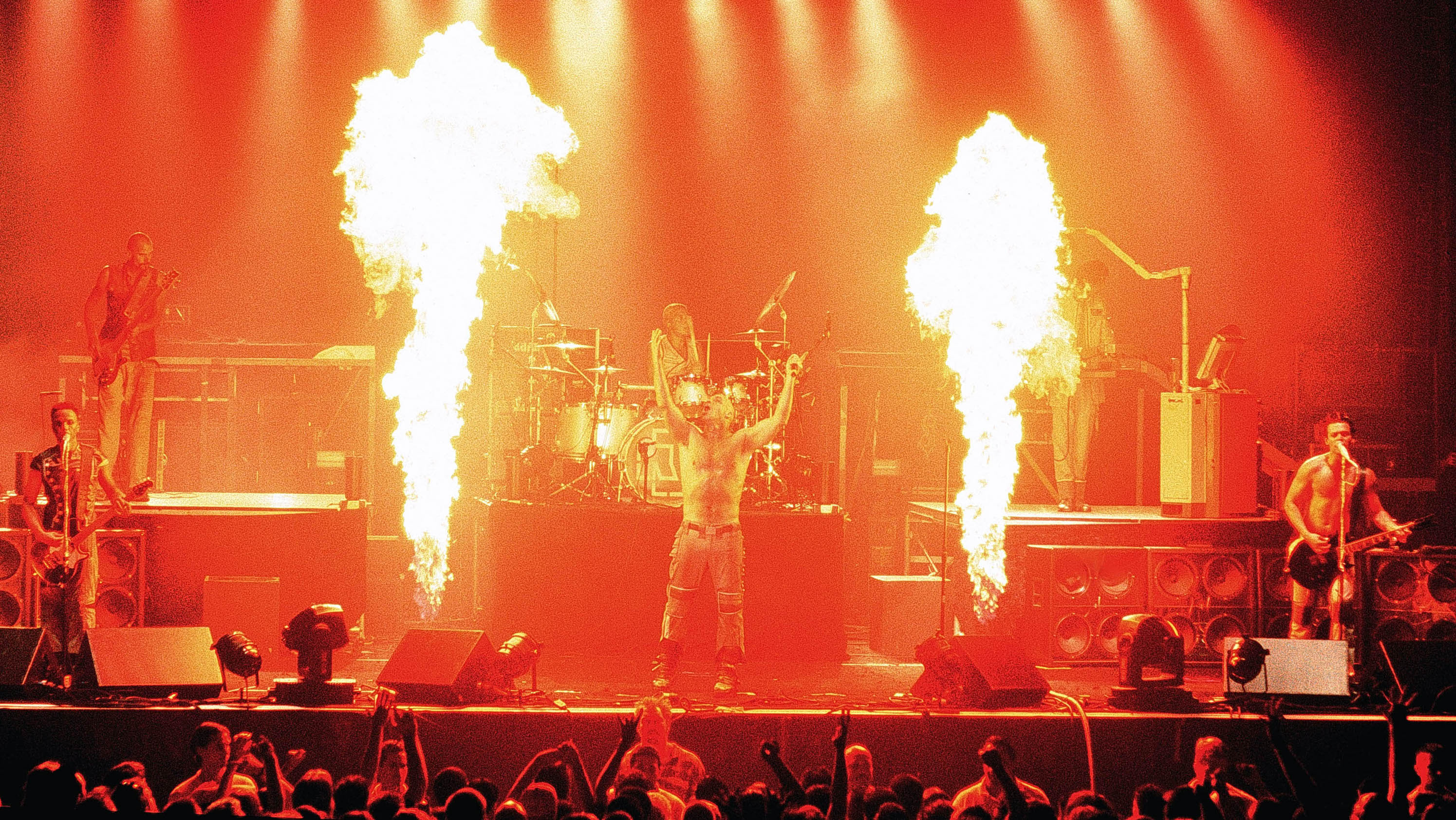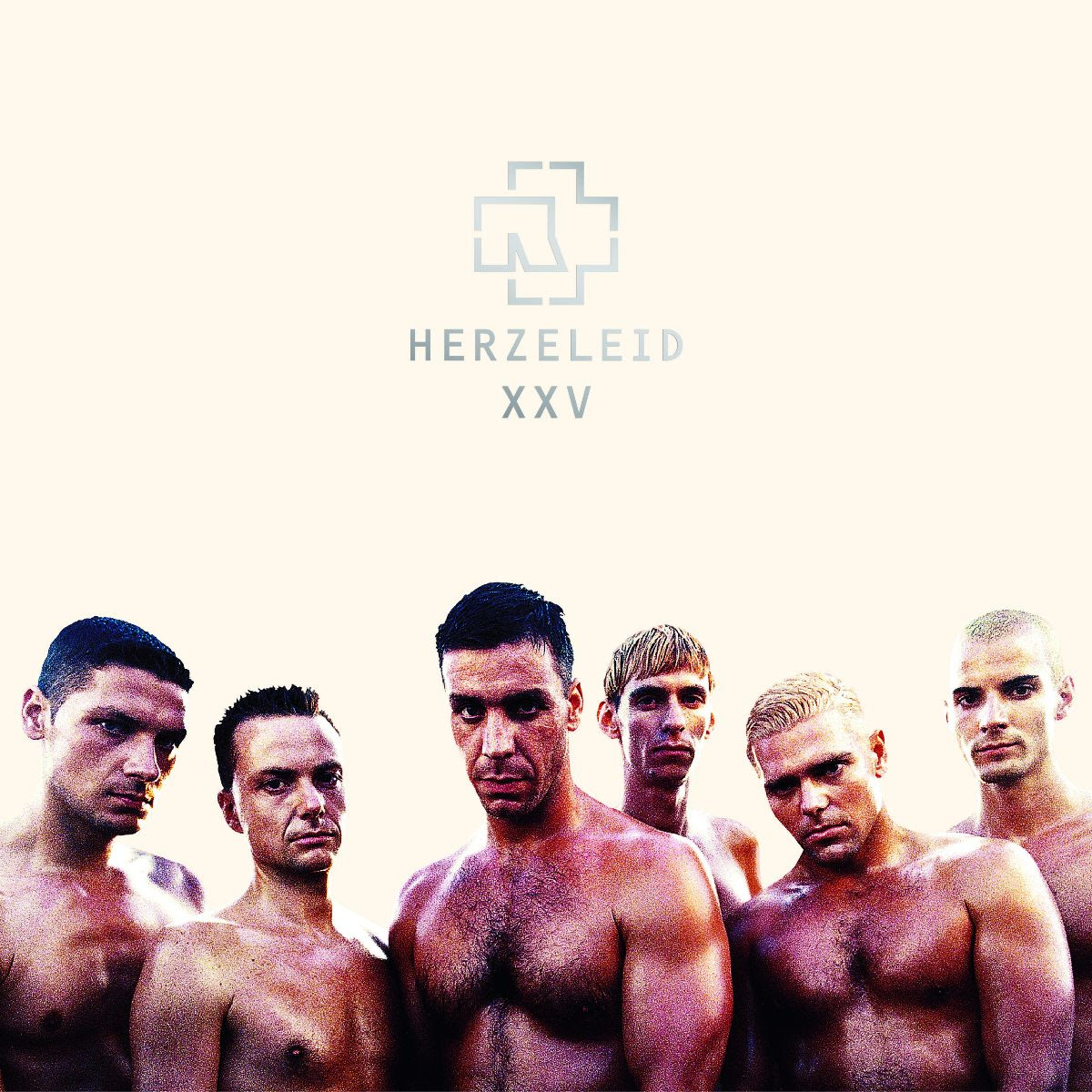Rammstein producer Jacob Hellner details the making of the industrial-metal icons’ 1995 debut, Herzeleid
25 years on, we dive deep into the guitar tones and performances behind one of Germany’s heaviest musical exports

Last year, German metal juggernaut Rammstein released their first album in a decade. But the band had something special in the bag for 2020 as well – a 25th anniversary re-release of their 1995 debut, Herzeleid.
The limited, remastered edition of the band’s seminal first album offers the original track list on a single CD in a digipak with deluxe slipcase version, as well as a two LP iteration with a slipcase containing two 180 gram heavyweight black vinyl discs with blue splatter effect. Digitally, meanwhile, the album is available with HD sound for the first time ever.

Herzeleid XXV is available now. Guitar World caught up with longtime Rammstein producer Jacob Hellner to discuss the creation of the record, the music that inspired it and the gear behind the famous Rammstein guitar sound.
There has been a lot of appreciation over the years for the Rammstein guitar sound. It's very tight, distorted and compressed – almost machine-like in nature. And it’s there right on the first record. Can you discuss how you created/captured that on Herzeleid?
Jacob Hellner: "The sound usually consists of two flavors, one analog – a Mesa/Boogie Rectifier – and one digital, a SansAmp, and these are tracked simultaneously so each take then consists of two tracks.
"Large diaphragm condensers have pretty much always been used – Neumann U 67, M 149 and U 47 through some kind of Neve preamp usually. Never the traditional rock mics like the [Shure] SM57 or [Sennheiser] MD421. The LDC mics provide a much more threatening vibe and that adds to the drama of the music."
How did guitarists Richard Kruspe and Paul Landers work together in the studio?
Get The Pick Newsletter
All the latest guitar news, interviews, lessons, reviews, deals and more, direct to your inbox!
"Depending on the riff, we do two to four takes, so just the basic riff can be up to eight tracks. The balancing of these guitars can differ but usually it's two-thirds Rectifier and one-third SansAmp. As the timing of the digital vs. the analog signal can differ we usually cross-pan them to avoid phasing issues. When all this lands in the right place you get this wall-of-sound vibe.
"As for the style of playing, the concept of having this machine-type flavor was there from the beginning. Even though we want it to sound sampled it actually isn’t. It’s all played and we try to avoid copy-and-paste activities. So even though every chorus is the same riff, each chorus is played so there will be small variances in the performance. All this can be done since both Paul and Richard are brilliant musicians."
Were there certain guitar parts that either Richard or Paul would gravitate toward on the songs?
"During preproduction it’s usually decided who is going to play what and then we stick to that. Sometimes it’s good to have two players on a song and sometimes it's better with just one. Whatever serves the song best."
Were there other artists that you and the band were taking cues from in crafting the sound of Herzeleid?
"When I met Rammstein, we soon realized that we had various types of music in common that served as an inspiration. Pantera’s Vulgar Display of Power, Metallica’s Black Album, The Prodigy’s The Fat of the Land and Ministry’s Psalm 69 were a couple. Depeche Mode is also a huge inspiration. However, we have never spent time in the studio listening to other stuff than the music we are currently working on."
On first release, Herzeleid did not make a huge impact in the U.S. But Rammstein soon broke through with their next album, Sehnsucht, which you also produced. Were you surprised that this type of music garnered such a big fanbase in America?
"When I saw them the first time back in ‘94 I instantly felt that they had great potential as so much of their signum, both visually and sonically, was already in place. However, that it would end up being as big as it has was beyond my wildest expectations."
Over the years, Herzeleid has come to be regarded as a classic. When you listened back to it to work on the 25th anniversary edition, what thoughts did you have about it? How do you feel it holds up all these years later?
"I usually don’t listen back to the stuff I’ve done once I’m finished. But coming back to this album was a pleasant surprise. It has a great sense of urgency and integrity which wasn’t obvious to me when I was in the middle of it back in the day. It holds up very well in my opinion!"
Rich is the co-author of the best-selling Nöthin' But a Good Time: The Uncensored History of the '80s Hard Rock Explosion. He is also a recording and performing musician, and a former editor of Guitar World magazine and executive editor of Guitar Aficionado magazine. He has authored several additional books, among them Kurt Cobain: Montage of Heck, the companion to the documentary of the same name.











